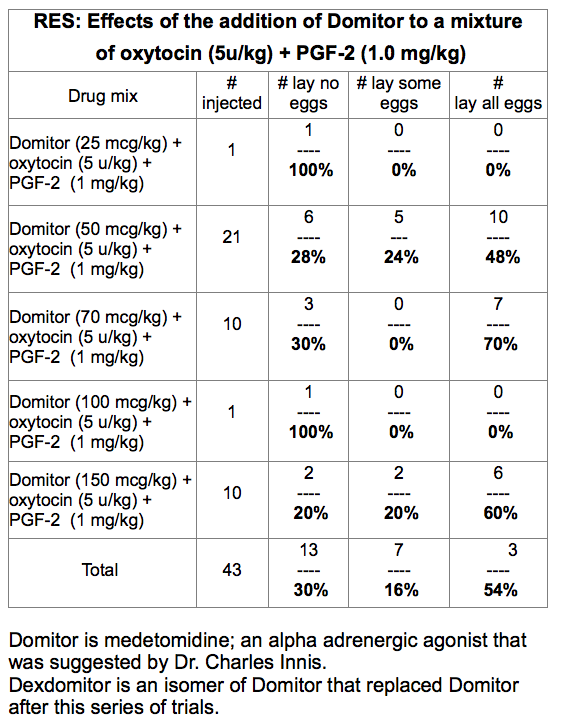Combinations of drugs we used
The dramatic improvement in success shown in the table below (when we combined oxytocin and Lutalyse) led to a long series of experiments to determine the best proportions of each drug.
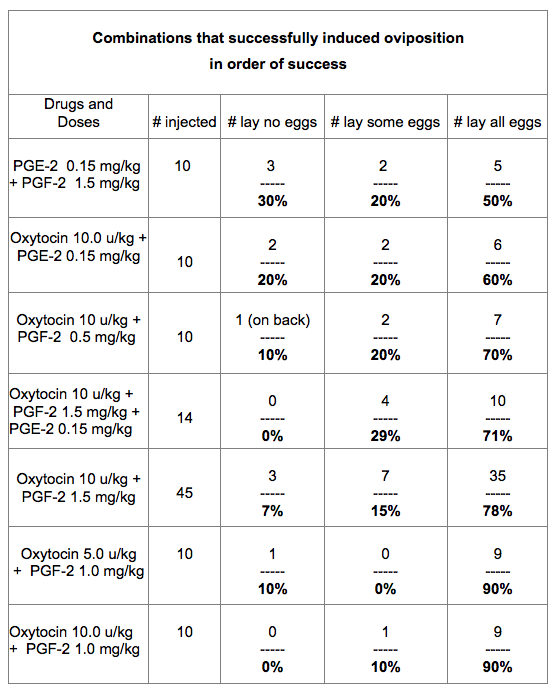
A common side effect of Lutalyse is diarrhea. Because the incidence of diarrhea rose 231% when the dose of Lutalyse was increased from 1.0 mg/kg to 3.0 mg/kg, and the success rate dropped, we did not pursue dose combinations using 3.0 mg/kg or more of Lutalyse. The table above shows the various combinations of prostaglandins and oxytocin that we tried initially.
Oxytocin (10u/kg) + Lutalyse (1.5mg/kg) had a 78% success rate compared to a 32% success rate with oxytocin alone; a dramatic improvement! In the early studies the oxytocin and Lutalyse were given by separate injections but later on, when the drugs were combined into one injection, the success rate was even higher (Instead of giving separate injections of oxytocin and Lutalyse ten minutes apart we decided to combine them into one injection). The combination was at least as effective and a lot less time consuming as shown below.
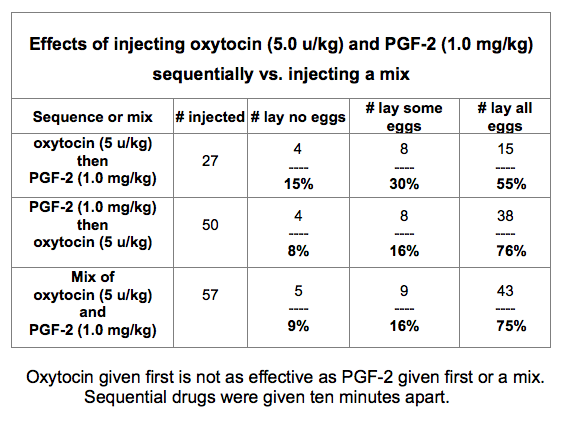
The manufacturer of Lutalyse suggests that it be stored at room temperature. Oxytocin is supposed to be refrigerated until used. However, a WHO study (Hogerzeil et al.1993) showed oxytocin had only a 3-7% loss of potency after a year at room temperature. Since there’s more variation than that in the potency of different batches of new oxytocin (Hogerzeil et al.1993), that rate of deterioration is irrelevant. So we wanted to see if we could save even more time by mixing the oxytocin and Lutalyse ahead of time and in “bulk.” We found that we could hold a mix of oxytocin 10 units/kg + Lutalyse 1.0 mg/kg for 28 days at room temperature as shown below without any decrease in effectiveness!
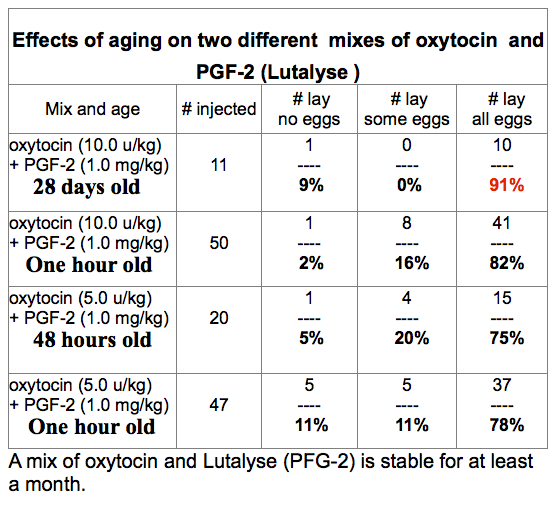
The two tables below illustrate the effectiveness of various combinations of oxytocin and Lutalyse. Success rates around 85% were found with some combinations when given as a single injection.
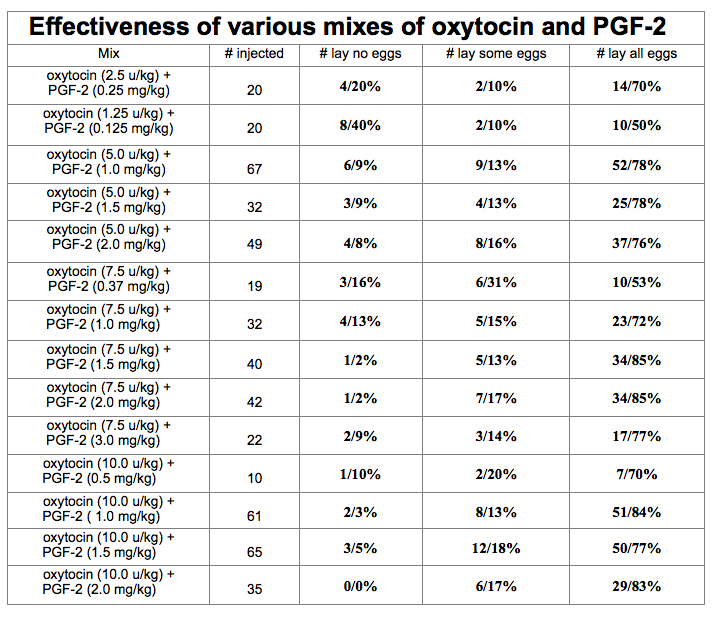

Before we finally realized that adding oxytocin to Lutalyse was not helpful we experimented with adding a third drug to that combination. First we added a third drug in the hopes it would reduce the anxiety that inhibits egg laying. The drug we tried was Telazol, a combination of tiletamine, a dissociative anesthetic like ketamine, and zolazepam, a tranquilizer like diazepam. This was suggested by Dr. Alvin Atlas, a specialist small animal veterinarian, as a suitable sedative. The following table makes it clear this drug was not helpful. Interestingly, the Telazol led to a variety of bizarre automatisms that must have interfered with oviposition.
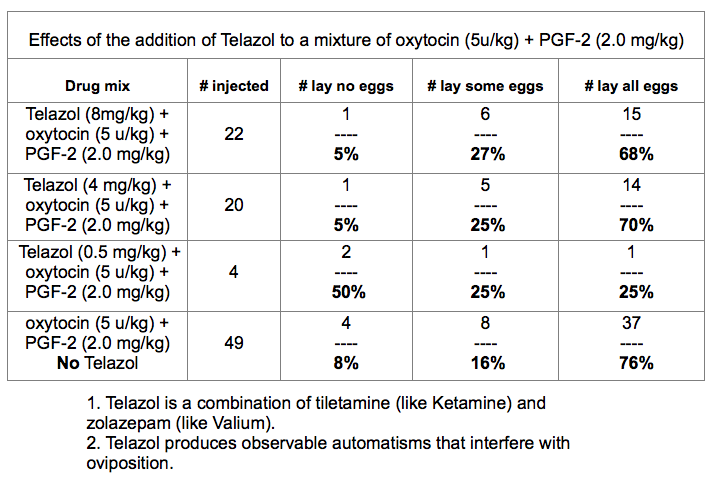
Next we tried adding bethanechol. Bethanechol is a muscarinic agent that increases contractions of the oviduct. When used alone it had no effect as shown below.
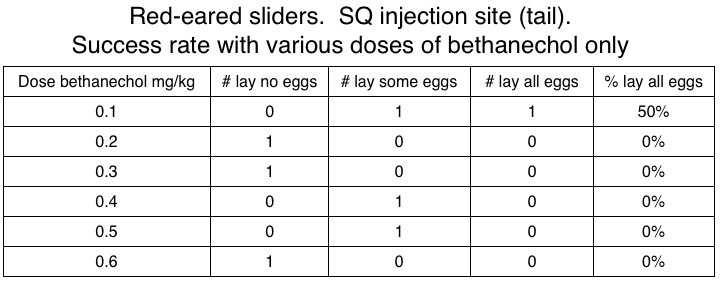
When bethanechol was combined with a mix of oxytocin and PGF-2 a dose of bethanechol of around 0.1 mg/kg increased the success rate from 85% to 92% as illustrated in the following chart. This was an improvement but not a major one.
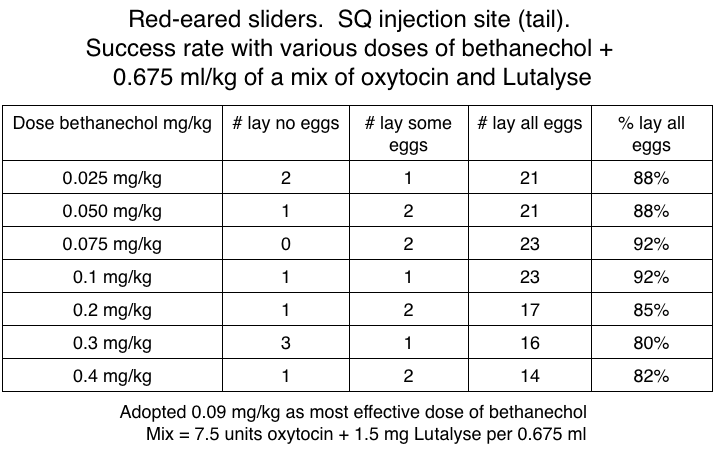
Phenylephrine, an alpha-1 adrenergic agonist, was the next drug we tried to add to the mix of oxytocin and PGF-2. Phenylephrine also stimulates the oviductal smooth muscle. When a dose of 25.0 mcg/kg was added to the mix of oxytocin and Lutalyse it increased the success rate slightly to 90% as shown below; a small improvement. Interestingly, the first 43 RES we injected with 25mcg/kg plus the mix laid all their eggs; a 100% success rate! However, the last 24 RES we induced did not respond so well, yielding that 90% overall success rate.
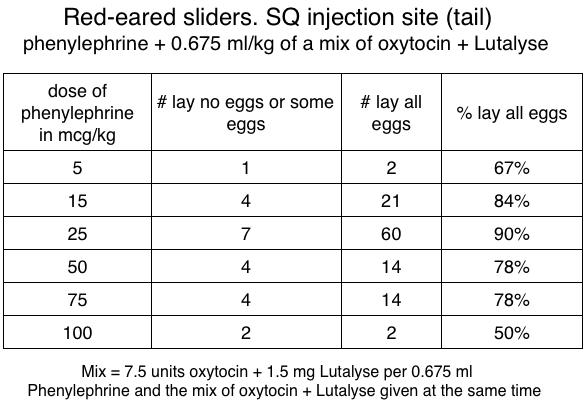
About this time Dr. Charles Innis, the veterinarian at the New England Aquarium, told us that a snapping turtle he was operating on had laid a partial clutch of eggs after it was given an alpha-2 adrenergic agonist called Domitor plus other drugs. We then experimented with Domitor by giving it after a mix of oxytocin and PGF-2. The results in the table below seems to indicate it was ineffective but we gave it after the mix of oxytocin and Lutalyse so the second injection disturbed the laying process. The alpha-2 adrenergic agonists would prove to be pivotal drugs in later experiments conducted with a different sequence to the injections.
